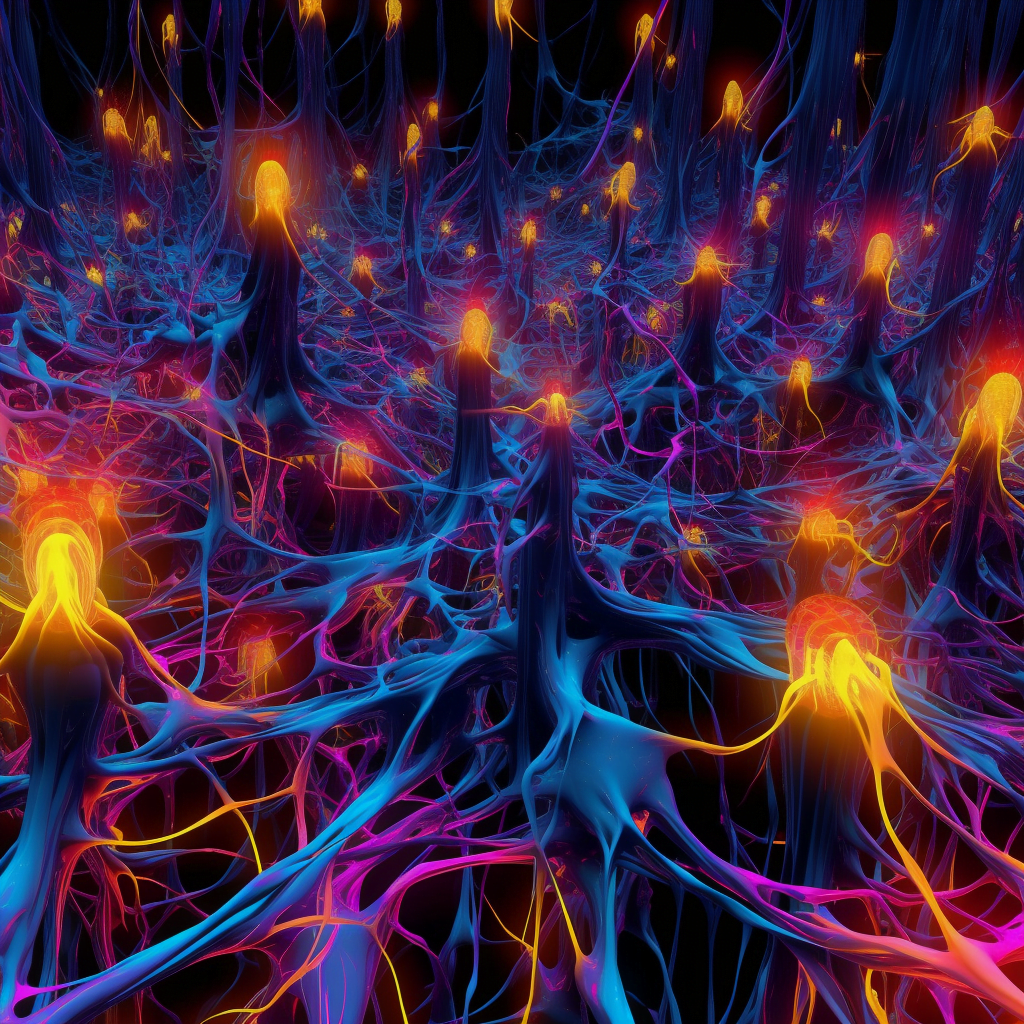
Have you ever had a messy room full of scattered, unmatched socks? Imagine having to sort them out.
At first, it seems like a mammoth task. But then you realize you could break it down – sort them by color, then by pattern, then by size. The more you do it, the quicker you get and the better you become, especially as you learn from your previous sorting attempts.
Interestingly, this sock-sorting scenario paints a picture of how an artificial neural network (ANN) operates. But, instead of dealing with socks, an ANN sorts and analyzes data, learning to recognize patterns over time, just like you learned to match socks!
Let’s learn a bit more about artificial neural networks, how they work, and what they do.
Understanding Artificial Neural Networks
What is an artificial neural network, you ask? It’s essentially a computer system that’s designed to work like our brains.
Our brains are filled with billions of cells called neurons that help us think, process information, and make decisions. These neurons pass signals between each other, which is how we learn and understand the world around us.
In an ANN, these neurons are substituted with something called nodes, and the connections between them are known as weights.
When the network gets some data, it passes the data through these nodes. As it does so, it tweaks the weights based on what it learns. This is very similar to how you learned to sort socks by their color, pattern, and size.

The more data an ANN processes, the more patterns it starts to recognize, and the better it gets at making predictions or decisions. Just like you become faster and more accurate at sorting socks the more you do it, an ANN improves with practice. But in this case, billions of permutations of practice!
Inside the Layers of an Artificial Neural Network
Artificial Neural Networks (ANNs), in their purest form, are an intricate symphony of nodes and weights, akin to neurons and connections found in the biological brain. Just as musicians in an orchestra each play their part in creating a harmonious melody, the various layers within an ANN work together to create complex computational abilities.
Why, you might ask, are ANNs often depicted in layers? The answer is as fascinating as the structure itself.
These stratified layers form the bustling hub of action where learning takes place. They’re the driving force behind the unmatched prowess of ANNs.
Picture a typical ANN, a multi-layered sandwich of data processing power. At one end, we have the input layer, the gateway where data begins its incredible journey through the neural network. At the opposite end lies the output layer, where, after a fascinating series of transformations, the ANN reveals its final decision or prediction.

Between these two ends, multiple hidden layers are meticulously at work.
Like a complex assembly line, they break down multifaceted patterns into simpler components. Picture it like an efficient laundromat, where socks are first sorted by color, then by pattern, and finally by size. Similarly, each layer of the ANN specializes in dissecting a part of the problem, contributing to the overall solution.
The Impact of Artificial Neural Networks
Artificial neural networks are not mere ethereal concepts or scientific playthings. They are active players in the drama of our everyday lives. They’re the invisible titans of technology, enhancing our world in subtle yet profound ways.
Have you ever stopped to marvel at your phone’s ability to recognize your face, or pondered how Netflix seems to know your viewing preferences intimately? These marvels are no accidents. They’re the fruit of ANNs laboring tirelessly to categorize and analyze data, delivering an unprecedented personalized user experience.
The voice that greets you when you ask Siri or Alexa a question, the technology that propels self-driving cars along our roads, the innovative healthcare systems predicting diseases before symptoms manifest — all are propelled by ANNs.
They may remain unseen, but they are ever-present, quietly working behind the scenes to make our lives more convenient, streamlined, and invigorating.
The Future of Artificial Neural Networks
As technology continues to soar to new heights, the role of artificial neural networks is set to become even more pivotal.
They won’t just be our data-sorting underlings; they’ll be our life-organizing assistants, refining our experiences, supercharging our productivity, and aiding in critical areas such as healthcare and climate change research.
The future holds exciting promises for ANNs. Envision a world where they drive personalized education, tailoring lessons to each student’s unique learning style. Imagine ANNs revolutionizing mental health diagnosis, providing a level of accuracy and timeliness never seen before.
Consider the potential of ANNs aiding in space exploration, unlocking secrets of the cosmos we’ve only dared dream about. This is the future of artificial neural networks: a world where these invisible titans power our quest for knowledge and efficiency, shaping not just our lives, but our civilization.




